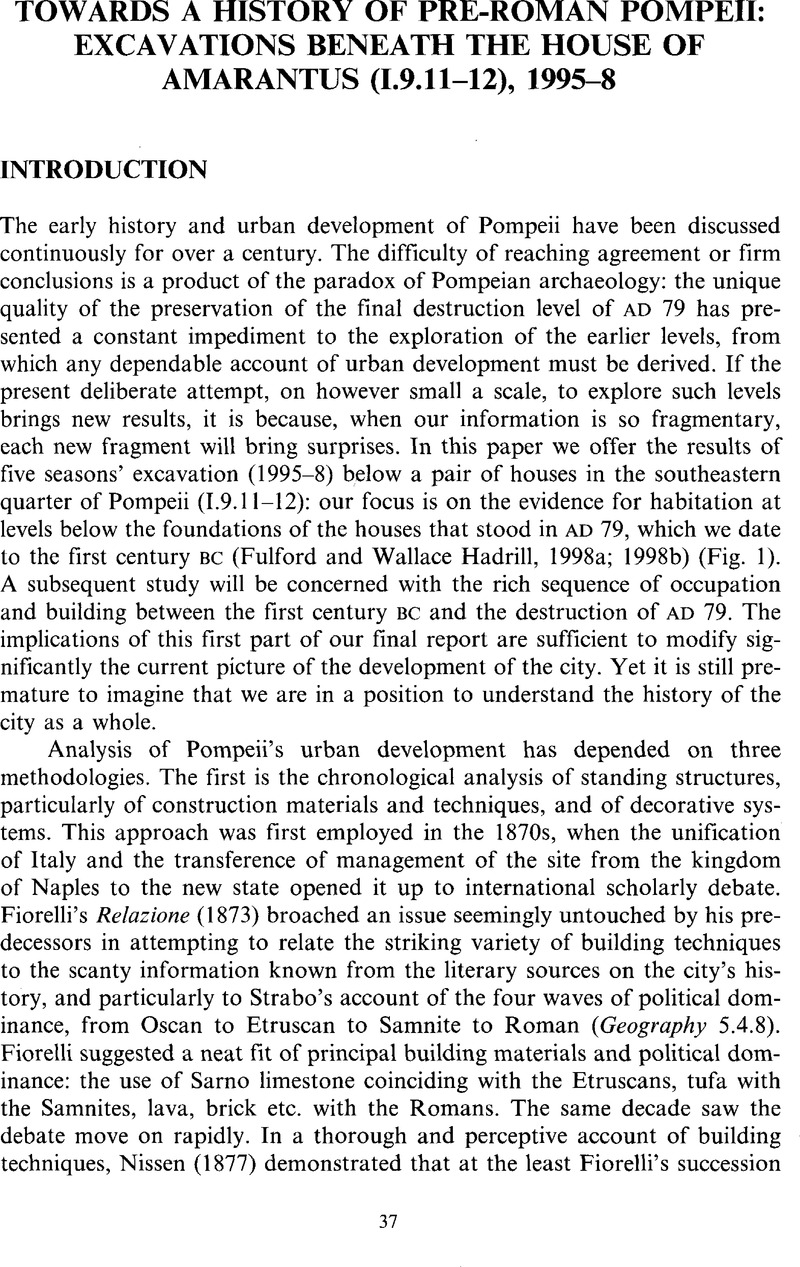Article contents
Towards a history of pre-Roman Pompeii: excavations beneath the House of Amarantus (I.9.11–12), 1995–8
Published online by Cambridge University Press: 09 August 2013
Abstract

- Type
- Articles
- Information
- Copyright
- Copyright © British School at Rome 1999
References
Acknowledgements
We wish to record our gratitude to the Soprintendenza Archeologica di Pompei for support and encouragement, and, in particular, to the Superintendent, Professor Pietro Giovanni Guzzo, and the Director of Excavations, Dr Antonio D'Ambrosio. We also thank our collaborators, Professor Antonio De Simone and Dr Salvatore Ciro Nappo, who were instrumental in setting up the project with us. We warmly thank our sponsors for the financial support which has made the project possible: the Humanities Research Board of the British Academy, the British School at Rome, the Society of Antiquaries of London, the Society for the Promotion of Roman Studies, the University of Reading and Enterprise Oil Italiana Spa.
A very great many have ensured the success of the project in and out of the field and, in addition to authors contributing to this report, it is a great pleasure for us to thank Jo Berry,Vittorio Celentano, Tim Eaton, Sophie Hay, Jane Harrison, Sarah Monks, Stephen Rippon, Anthony Sibthorpe, Anita Stone, Christina Trier and Liz Wild. Brian Williams was responsible for the illustrations except the pottery (JT).
References
- 7
- Cited by




